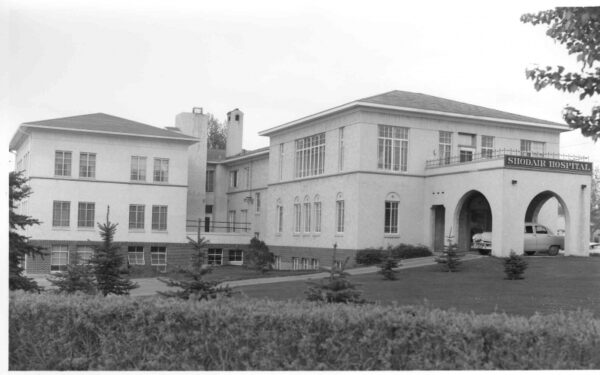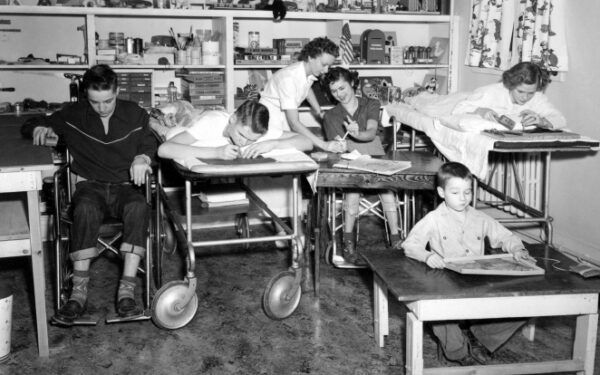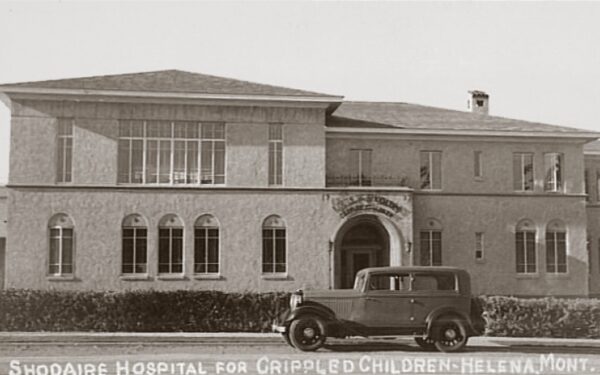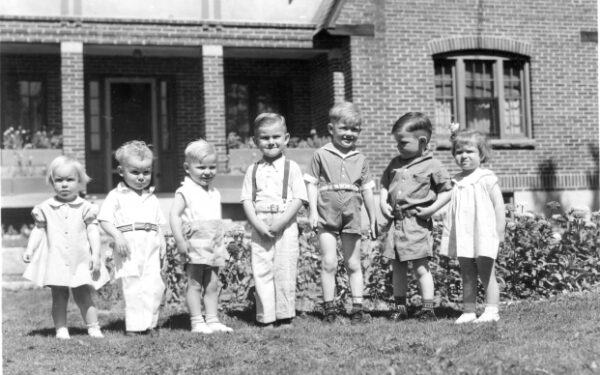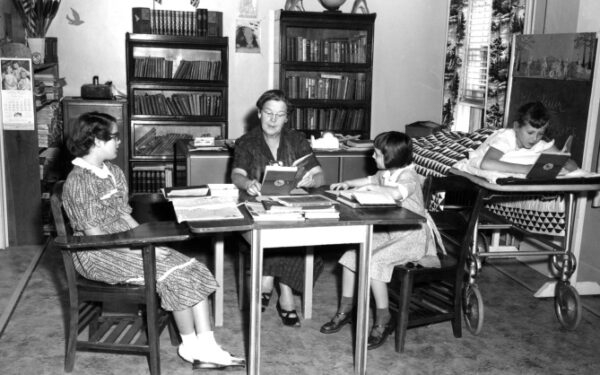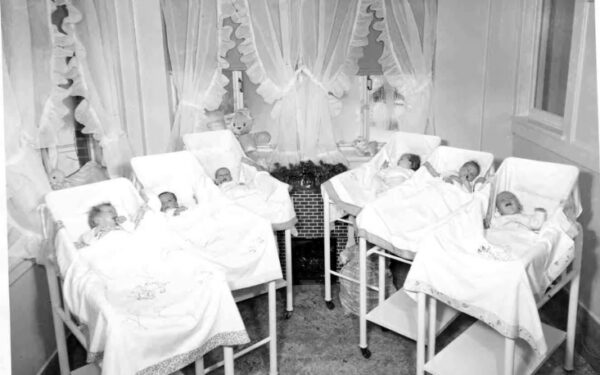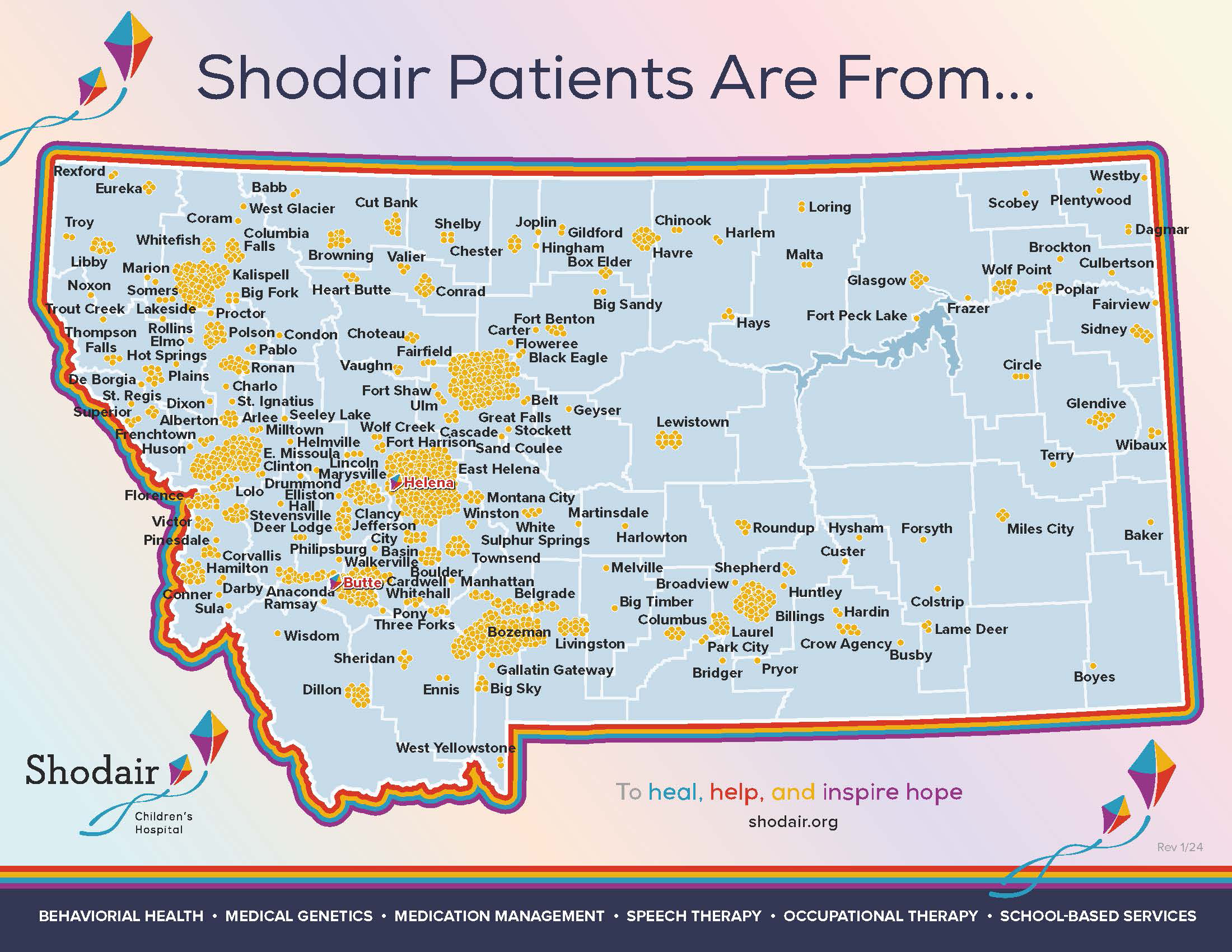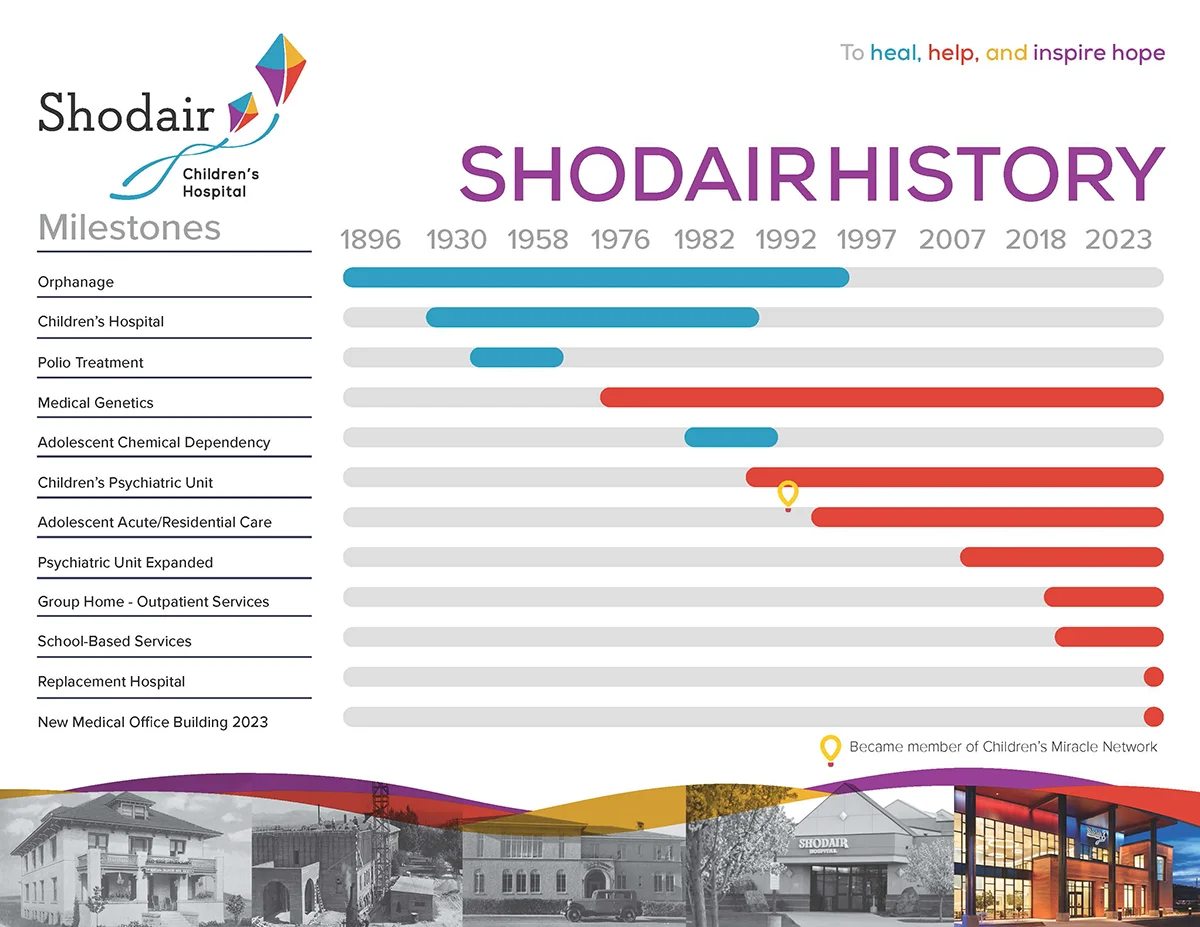About Shodair
SHODAIR CHILDREN’S HOSPITAL
. . .
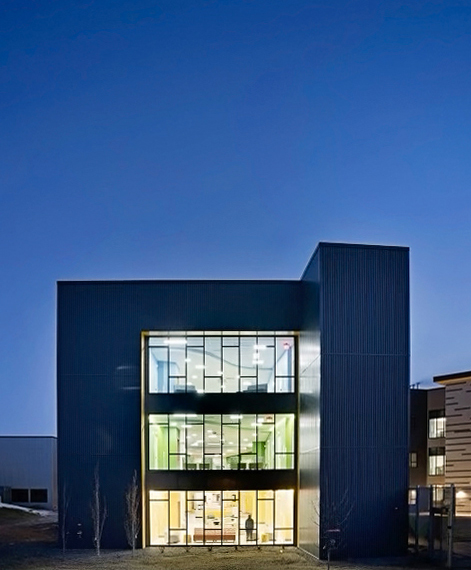
Shodair is creating a healthy and hopeful Montana through specialized psychiatric care for children and adolescents along with a nationally recognized genetics program providing care for all ages.
Shodair Children’s Hospital became a Children’s Miracle Network Hospital in 1987 and remains the only CMN hospital in Montana. Every penny of every dollar that is raised during a CMN fundraiser supports Shodair directly. Donated funds help cover costs for Montana families who cannot afford to.
In addition, Shodair first received Joint Commission accreditation in 1992, and has been continuously accredited since that time. Shodair’s education program is an accredited year-round school for elementary, middle, and high school students. Our team of educators are certified in special education and includes six teachers, six teaching assistants, a speech pathologist, a school psychologist, and a principal.
Where we want to be
To be Montana’s leading resource in children’s mental health, family well-being, and genomic care.
What we stand for:
- Non-Violence
- Social Learning
- Emotional Intelligence
- Democracy
- Social Responsibility
- Open Communication
- Growth and Change
Five Keys to Success:
- Quality, People, Culture
- Image and Community Involvement
- Expanded Care Continuum
- Partnerships and Affiliations
- Financial Performance
How we measure success:
- Rate of turnover, readmissions, seclusions, restraints
- Genetic wait time, consultations, teleconsults, length of stay
- Lab tests, partnership relationships
- Operating margin, cash position, foundation support
Our Mission: “To heal, help and inspire hope”
History
Shodair Children’s Hospital began as a home for orphaned and abandoned children in 1896. As Shodair evolved to meet the needs of Montana’s children, it became the first facility in the state to treat children with polio, the first facility with a department of medical genetics, and the first with a chemical dependency unit dedicated to adolescents.
Since that time, Shodair Children’s Hospital has stayed in step with the ever-changing needs of Montana’s children while providing a safe, therapeutic, and nurturing environment to promote positive change.
Shodair is a nonprofit organization overseen by a board of community members.
Blueprint of Hope
. . .
A blog that inspires the inspired, educates on mental health, and shares abundant joy.
Located at the edge of Montana’s capital city and standing three stories tall is a children’s mental health hospital you can see right through. And we like it that way! With windows that stretch from floor to ceiling and a model of care that celebrates adversity, our team believes in doing mental health care differently…and it’s made all the difference. That’s why this isn’t just any ’ol blog, it’s an inspiring one – highlighting our innovative care programs, educating our community on mental health, giving a voice to patients, recognizing our resilient employees, and ultimately give you an inside look at our Blueprint of Hope, Shodair’s journey of caring for Montana.

Blueprint of Hope
. . .
A Weekly Content Series
Just months away from opening our new hospital building, we invite you to join us weekly as we walk through our new state-of-the-art space, connect with generous donors, give a voice to patients, highlight our resilient employees, and ultimately give you an inside look at our Blueprint of Hope, Shodair’s journey of caring for Montana.
 Thank you for your interest in Shodair Children’s Hospital, Montana’s premier provider of psychiatric treatment for children and adolescents, and comprehensive genetic services for people of all ages.
Thank you for your interest in Shodair Children’s Hospital, Montana’s premier provider of psychiatric treatment for children and adolescents, and comprehensive genetic services for people of all ages.
Shodair Children’s Hospital is proud to be accredited by The Joint Commission. This accreditation demonstrates our commitment to patient safety. As part of our commitment to a culture of safety, employees should know that they can communicate directly with The Joint Commission if a problem occurs that an employee believes has not been corrected. No punitive action is taken when an employee communicates directly to The Joint Commission. Anytime staff notes patient safety problems, they should be immediately brought to the attention of a supervisor who is responsible for documenting the concern and taking appropriate corrective action.
Contact information for the Joint Commission is available at www.jointcommission.org.

